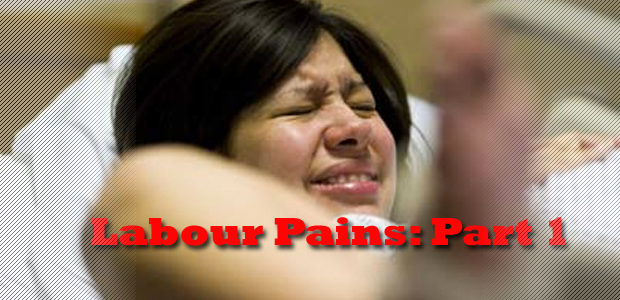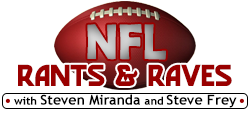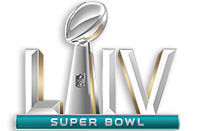
It has been a chaotic and rough couple of months for all associated with football; for the owners, the players and, not least, the fans. It all started when the owners opted out of the Collective Bargaining Agreement (CBA) which meant that we were thrown into the depths of a lockout. The NFL, as a business, was therefore placed on hold. A Judge ruled the lockout to be illegal and granted an injunction that brought it to an all too brief end. A period of limbo ensued before three other Judges granted a stay of the first Judge’s decision. Lockout back on. But wait, this was only temporary. That is until the same panel of three Judges decided last week to keep the lockout in effect until an appeal is heard of the first Judge’s decision. It will not be until this appeal is heard that we can finally be sure about whether the lockout will continue or disappear forever (pending further appeal).
To make sense of it all, we need to go back to the very beginning. There had not been a work stoppage in the NFL since 1987, but on the 11th March 2011 the old CBA came to an end and the owners opted out of it, resulting in a lockout. This lockout meant that players were not allowed into team facilities, could not meet with coaches or even obtain playbooks. The lockout also meant that there were no operating rules in place to govern the league. In short, a free-for-all ensued.
The lockout would come to an end 45 days later when District Judge Susan Nelson made the decision to grant an injunction in favour of the players. The lockout was declared to be ‘illegal’ and teams were ordered to open their facilities. Owners would oblige and literally unlock the gates, but this was the extent of their hospitality. There were no welcome back parties thrown. Players could walk into the building, but they were still effectively being denied the opportunity to participate in any work. There were a few incredible coincidences as well, with strength and conditioning coaches for some teams incidentally being given that first day post-decision off.
It did not seem like it on the surface, but District Judge Nelson’s decision was still a decisive one in favour of the players. Judge Nelson wrote an 89-page opinion that was conclusive and damning. It was never written for the benefit of the audience that was receiving it; the Judge was fully aware that her decision would be appealed and so she wrote it for the eyes of the 8th U.S. Circuit Court of Appeals. The reports were that this opinion was bulletproof.
Naturally, this decision left the owners furious and many attribute the treatment of the players in the aftermath of the injunction to pettiness. But this would not be completely fair. We should not forget that Judge Nelson’s ruling did little more than lift the lockout; no rules were put in place for what should happen next. The league was not certain of the extent of their obligations. Should the players be allowed to workout on team facilities? Who would be liable if a player was injured? Should teams like the Eagles be allowed to shop players like Kevin Kolb? Should undrafted free agents be allowed to sign with teams? So many questions arose and add to this the fact that the owners had filed a motion for a stay of Judge Nelson’s decision. If this was granted then the lockout would be back on and all of these questions would become irrelevant.
Judge Nelson, unsurprisingly, denied the NFL’s appeal two days later. An appeal for a stay then went to the 8th U.S. Circuit Court of Appeals. On the fourth day after Judge Nelson’s decision, the NFL had finally found a way to have their facilities open for full workouts. Players met with coaches and got their hands on playbooks. For 2011 number one draft pick Cam Newton, this day was invaluable. The league had even stated that they would be announcing rules that would regulate trades and free agency. It was a promising morning of cooperation. Then, at 6pm, the 8th U.S. Circuit Court of Appeals decided to grant the league a stay of Judge Nelson’s decision. The lockout was back on, and the players were once again cut off.
But the stay of Judge Nelson’s decision was initially only temporary. Last week, a more detailed review took place and it was decided that the lockout would be allowed to continue up until the final appeal of Judge Nelson’s decision. This was a significant blow for the players in these proceedings, and the further we investigate the more devastating it appears. On page 11 of the 8th Circuit’s decision it states, “our present view is that Judge Nelson’s interpretation is unlikely to prevail”. This is an ominous precursor, because it will ultimately be the same panel of Judges that decide the final appeal: Judge Duane Benton, Judge Steven Colloton and Judge Kermit Bye.
The appeal of Judge Nelson’s decision will be heard next month. The reason why this hearing is taking place so swiftly, (in terms of the courts), is because the NFL filed a successful motion for an expedited appeal. As oral arguments will be taking place on June 3rd, a final decision from the Court is expected around late-June to early-July. Although there could still be a theoretical appeal of this decision to the U.S. Supreme Court, it is extremely doubtful that the Supreme Court would take this case. Accordingly, the decision of the 8th Circuit will likely be a final one.
If the players are successful, then this will be a huge win. The lockout will be over and the Court should oversee that the NFL places suitable rules of business in operation. In all likelihood these will be the rules of 2010, with no salary cap and six years to unrestricted free agency etc. These rules would be temporary though, until a new CBA is agreed which will regulate the league for the next few years. Importantly, the prospects of a new football season will improve dramatically. Both sides will need to return to the mediation table, but the players will finally have the leverage that they so desperately need.
Most analysts originally predicted that the players would prevail, given the strength of Judge Nelson’s 89-page opinion; it was thought to be extremely difficult to overturn. But given the flow of this offseason nothing should be taken for granted, and it is of little surprise that another twist has presented itself. If page 11 of the 8th Circuit’s decision is anything to go by, then the owners are surely the favourites to triumph at the appeal hearing. If the owners do prevail, then the lockout will be back on and the players will have no leverage in the negotiation process other than a potential windfall from Judge Doty in the TV lockout case. This will undoubtedly threaten the chances of a full 2011 season. And as fans we are left feeling helpless because there is nothing we can do about it. We are confined to the waiting room, just hoping that all parties involved (especially us fans) live through this process.
By Ognjen Miletic




Oggy has done a nice job laying out the situation thus far. A solid read for those who want to be up-to-date.